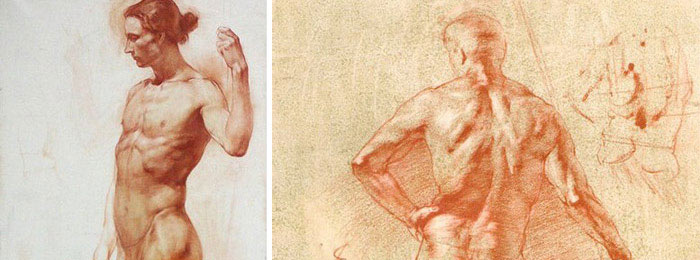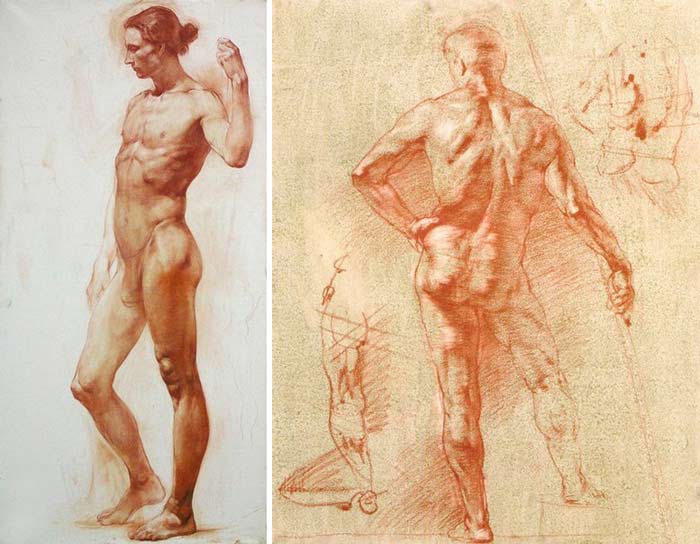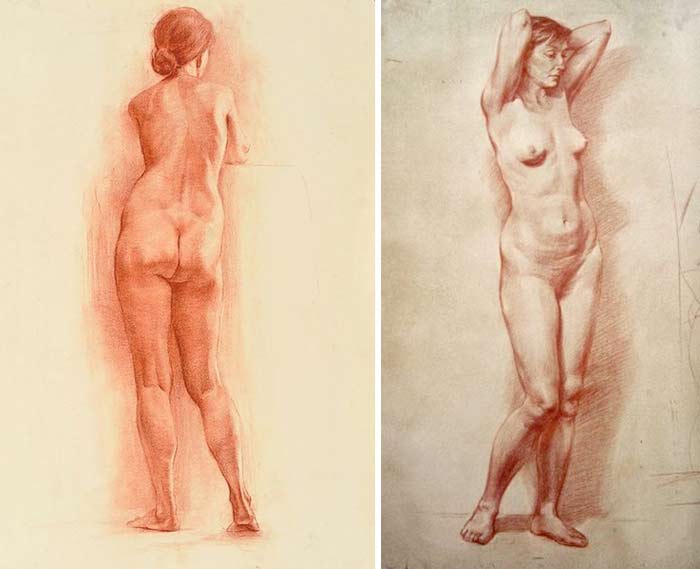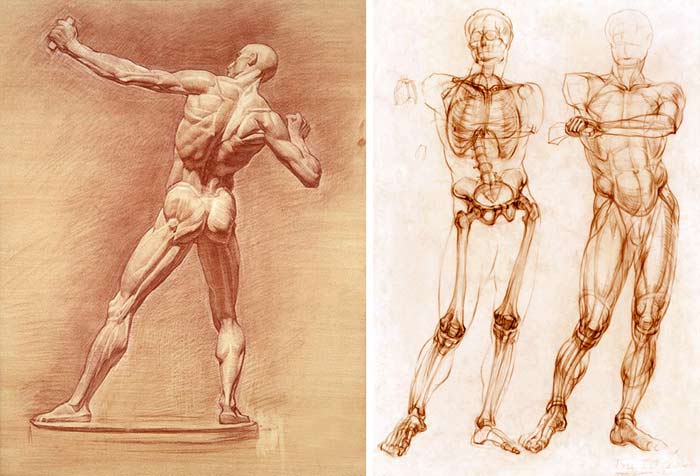Drawing what you know vs. Drawing what you see

Drawing what you know – Constructive drawing principles
Question from Lee, Anatomy Master Class subscriber
I am wondering if I’m on the right track, I am unsure if I have understood the idea of drawing what you know, not what you see?
Answer from Vladimir London, Anatomy Master Class tutor
Hi Lee,
Many thanks for your question.
When drawing what you see or “think you see” will inevitably end up with drawing mistakes.
This becomes very apparent when you do life drawings and forget to apply constructive drawing principles. The result might look good to you, but most likely will be amateur.

To avoid mistakes in drawing, you have to study what you see by constantly asking questions like:
- How many times the height of the head fits in the height of the figure?
- What are the main proportions of the model’s body?
- Is the head symmetrical in your drawing?
- Is the distance between eyes equal to one eye?
- Is the length of the hand equal to the height of the face?
- Is the model’s center of gravity projects to the footprint?
- How much every next phalanger of the hand is bigger than the previous one?
- And so on…
You can’t “accidently” draw correct figures and portraits by mindlessly copying what you see. Drawing what you see will not develop your drawing skills. This is the same pitfall as students have when copying from photos.
You need to draw what you know by analyzing model’s shapes and proportions and applying what you know about human anatomy in your drawing.
When you’re thoughtfully using constructive drawing principles, you will improve your drawing skills with every artwork you make. Constantly running a question-and-answer session in your head while drawing will help you to avoid many mistakes. That’s what we advocate in the Drawing Academy course.



Of course, you need to know the proportions of human body, head and face, you also need to understand what bones and muscles influence the body appearance. This is what we teach in the Anatomy Master Class figurative drawing lessons.
Only by employing proficient drawing techniques including the constructive drawing principles, bones and muscles anatomy, proportions of a human body, you will be able to grow your figurative drawing skills to the point when you can draw figures and portraits from life, memory and imagination in the realistic manner.
I hope, now you see the difference between “drawing what you see and what you know”.
Kind regards,
Vladimir
Learn human body anatomy and proportions quickly and easily
One-time payment - Lifetime Membership
$97 USD




